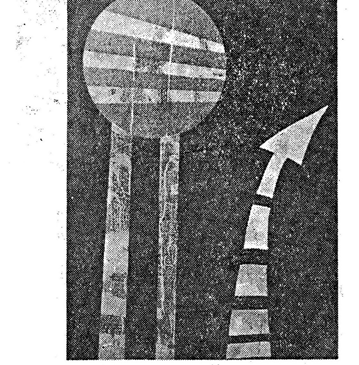This essay by Donald Brook published in the Canberra Times, for November 1966 in response to my first solo show at Nundah Gallery, O'Connor, Canberra in November 1966. The exhibition consisted of prints, mostly silkscreen, created between 1964 and 1966.
When you are ready to return to the Library or another space in the gallery, please press the appropriate button below.
colours in print
By DONALD BROOK
Silk-screen and other prints by Arthur Wicks at Nundah Gallery, November 3- 13.
![]()
GOOD paintings are expensive and quite apart from the cost of reputations there is a simple sum that will show how much a picture must cost if the artist is to live.
Award your artist a net income, before tax, of $A a year. Let him produce B paintings in an average year, but divide by C to get the proportion that is successful, exhibited, and eventually sold. Allow $D a year for the cost of maintaining a studio and buying materials, and $E a year for such exhibition expenses as transport, dealers' commission (between 25 per cent and 33-1/3 per cent) and framing. Fill in the figures from A to E with any sum that is reasonably realistic, and it will be evident that there is quite a high minimum below which only the part-timer and the amateur can sell.
The modern upsurge of interest in printmaking is almost certainly not economically motivated; but it does have the incidental consequence that works of art made by one of the productive processes are not in principle inferior to unique works, and they can be offered a good deal more cheaply.
Arthur Wicks concentrates on the silk-screen print in small editions often under a dozen. He experiments also in several directions that are on the whole more technically than aesthetically interesting. One is not so impressed by a novelty of effect that one's curiosity about means is greatly stimulated. Another printmaker cares, the average viewer does not..
There are two main styles: one organic and the other pop-and-poster geometric. Examples of the former strike me as generally less powerful than the latter because the artist's inventive capacities with lines and shapes under a free hand are limited and fairly ordinary, whereas his use of colour to give vitality and even profundity to a firm pattern, however banal in itself, is far from ordinary. It will be instructive to compare the black and white illustration accompanying this review with the colour version.
In Study in Purple, Full Speed, and On Target the colours are richly saturated, yet with the muted surface, neither glossy nor matt nor satin, that is so characteristic of prints, so inimitable by any other means, and so complete a justification of the medium.
The effect of one only just perceptibly translucent colour laid over another is not, of course, Arthur Wicks' invention; but it is one that he exploits impressively,
whether by deliberation or by having a commendable eye for the felicitous accident. Artistic sensibility is as, much a matter of knowing how to experiment and what to throw away as it is of knowing how to bring off precisely what one plans.

The Obelisk, by Arthur Wicks, from his
exhibition of prints at Nundah Gallery
The Canberra Times, Friday 4 November 1966